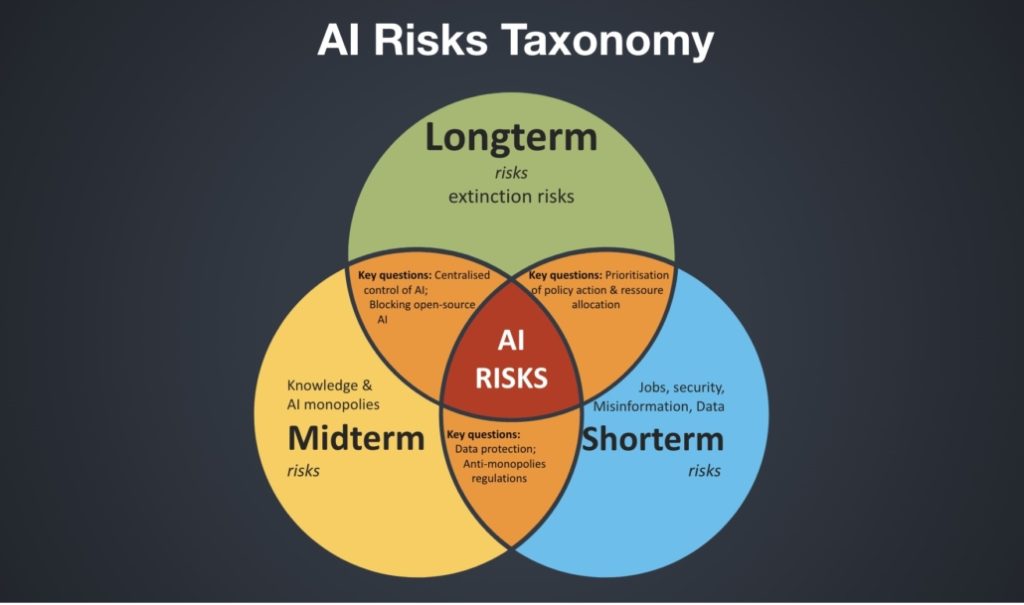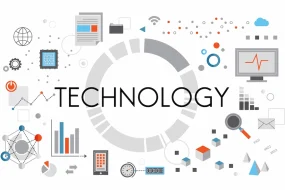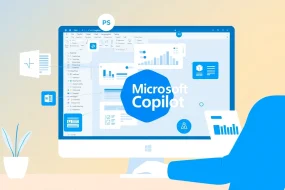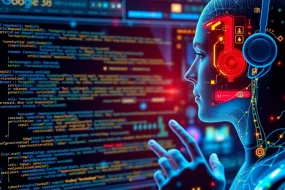- Home
- AI & Tech Tools
- Astounding Future-Facing Gener ...

The Dawn of a New AI Era
Imagine a world where a machine can draft a marketing campaign, design a life-saving drug, or predict supply chain disruptions before they happen. This isn’t science fiction—it’s the reality of future-facing generative AI in 2025. As businesses race to harness this transformative technology, one question looms: How can leaders leverage generative AI to stay ahead without drowning in ethical or operational risks?
Generative AI, the engine behind tools like ChatGPT and Midjourney, has evolved far beyond chatbots and image generators. By 2025, it’s become a dynamic force driving innovation across industries, from healthcare to manufacturing. According to Gartner, 65% of enterprises now use generative AI to automate complex tasks, up from just 15% in 2023. But with great power comes great responsibility—how do we balance its potential with pitfalls like bias, security, and workforce disruption?
Let’s explore how AI is rewriting the rules of business and what leaders must do to thrive in this new era.
What’s Changed?
The AI of 2025 is faster, smarter, and more intuitive. Gone are the days of clunky outputs and glaring inaccuracies. Today’s models, like GPT-5 and Claude 4, boast multimodal capabilities, seamlessly blending text, images, and even sensory data. For instance, a single prompt can now generate a 3D product prototype, a user manual, and a targeted ad campaign—all in minutes.
But speed isn’t the only breakthrough. The rise of smaller, domain-specific AI models has democratized access. Startups and mid-sized firms can now deploy tailored AI solutions without billion-dollar budgets. Take Mistral’s NanoGPT, a lean model used by European manufacturers to optimize assembly lines. It’s proof that generative AI isn’t just for tech giants anymore.
What’s Next? The Rise of “Self-Improving” AI
In 2025, generative AI systems are beginning to learn from their own outputs. For example, Google’s AlphaCode X refines its programming skills by analyzing millions of open-source projects, fixing bugs in its code without human intervention. This self-optimization loop, dubbed “AI-ception” by MIT researchers, is projected to double productivity in software development by 2026.
Where Generative AI Is Making Waves

1. From Drug Discovery to Personalized Care
What if AI could cut drug development time from 10 years to 10 months? In 2025, it’s happening. Companies like Insilico Medicine use generative AI to simulate molecular structures, accelerating the creation of treatments for diseases like Alzheimer’s. In early 2025, their AI-designed drug ISM-101 entered Phase III trials—a process that traditionally takes decades.
But the impact goes beyond labs. Hospitals are deploying AI to create personalized care plans. For example, Mayo Clinic’s AI system analyzes patient histories, genetic data, and real-time vitals to suggest tailored therapies. The result? A 30% reduction in readmission rates for chronic conditions, as reported by MIT Technology Tools Review.
The Telemedicine Revolution
In rural Kenya, where doctors are scarce, AI-powered diagnostic tools like Ada Health’s GenAI Clinic Assistant are bridging gaps. By cross-referencing symptoms with global medical databases, the tool provides preliminary diagnoses with 92% accuracy, enabling nurses to prioritize critical cases. “It’s like having a second opinion from a world-class specialist,” says Dr. Wanjiku Mwangi, a Nairobi-based physician.
2. Hyper-Personalization at Scale
Remember when marketers relied on guesswork to segment audiences? Generative AI has turned that into a relic. Tools like Jasper 2.0 and Adobe Firefly analyze consumer behavior across platforms to generate dynamic content—ads, emails, social posts—that adapt in real time.
Take Nike’s 2025 “Adapt & Conquer” campaign. Using generative AI, the brand created thousands of localized video ads tailored to weather conditions, cultural events, and individual fitness goals. The campaign drove a 22% increase in click-through rates, proving that personalization isn’t just a buzzword—it’s a revenue driver.
Small Businesses, Big Impact
Even local bakeries are joining the AI revolution. SweetBites, a family-owned shop in Toronto, uses generative AI to design weekly menus based on weather forecasts and social media trends. “When it’s raining, our AI suggests comfort foods like chocolate croissants. On sunny days, it pushes iced lattes,” says owner Maria Chen. The result? A 35% boost in seasonal sales, according to Shopify’s 2025 SMB report.
3. AI Tutors and Democratized Learning

In rural India, students without access to top-tier schools are learning calculus from AI tutors. Platforms like Khan Academy’s AI Mentor use generative AI to adapt lessons to each student’s pace, language, and learning style. A 2025 UNESCO study found that AI-driven education tools narrowed the global learning gap by 40% in two years.
Meanwhile, universities are flipping the script on research. Stanford’s “Project Galileo” uses AI to generate hypotheses for climate studies, slashing data analysis time by 70%. As one researcher quipped, “It’s like having a PhD co-pilot.”
Breaking Language Barriers
Duolingo’s AI Language Labs now simulate real-world conversations in over 50 dialects, from Quebec French to Nigerian Pidgin. Users practice negotiating salaries or ordering street food in virtual environments, with AI providing instant feedback on accent and grammar. Early adopters saw a 50% faster fluency rate compared to traditional methods.
4. Smarter Factories, Fewer Delays
Future-facing generative AI isn’t just optimizing production—it’s reimagining it. Siemens’ AI factory in Berlin uses real-time data from sensors and market trends to redesign products on the fly. When supply chain disruptions hit, their AI tweaked a car part’s design to use available materials, saving €50 million in delays.
But the real game-changer is sustainability. Companies like Patagonia now use AI to simulate eco-friendly materials, reducing reliance on physical prototypes. The result? A 45% drop in R&D waste, per a 2025 McKinsey report.
No More Downtime
General Electric’s AI-driven SmartRepair System predicts equipment failures weeks in advance. By analyzing vibration patterns and thermal data, it schedules maintenance during off-peak hours. In 2025, this reduced unplanned downtime by 60% across GE’s wind farms.
Risks and Mitigation Strategies

For all its promise, AI isn’t without peril. Let’s address the elephant in the room:
Bias and Ethical Quandaries
When a hiring AI at a Fortune 500 company unfairly downgraded non-native English speakers in 2024, it exposed a harsh truth: AI mirrors human biases. In 2025, solutions like “bias audits” are gaining traction. Tools like IBM’s Fairness 360 scan AI outputs for discriminatory patterns, while regulations like the EU’s AI Accountability Act mandate transparency in training data.
Security and Misinformation
Deepfakes caused a 20% spike in corporate fraud last year, says a 2025 Interpol report. To combat this, firms like OpenAI now embed digital watermarks in AI-generated content. Meanwhile, startups like VerifyMe offer blockchain-based verification to distinguish real from synthetic media.
Job Disruption?
Will generative AI erase jobs? Not if businesses adapt. Amazon’s “AI-Upskilling 2025” program trains warehouse workers to manage AI systems, pivoting roles rather than eliminating them. As CEO Andy Jassy notes, “The goal isn’t to replace humans—it’s to make them irreplaceable.”
Preparing for the Generative AI Revolution? Your Roadmap
How can your business stay ahead in the age of generative AI? Start with these steps:
- Audit Your Workflows: Identify repetitive tasks (e.g., data entry, content creation) ripe for AI automation.
- Pilot Small Projects: Test tools like ChatGPT Enterprise or Midjourney for Business in low-risk areas.
- Invest in AI Literacy: Host workshops on prompt engineering and ethical AI use.
- Partner Strategically: Collaborate with AI vendors who align with your industry needs.
- Build a Governance Framework: Assign an AI ethics officer to oversee compliance and risk management.
Download Our Free Checklist: “5 Steps to Prepare for Generative AI Adoption”
The Future Is Here—Are You Ready?
Generative AI isn’t a distant dream—it’s reshaping industries here and now. From curing diseases to crafting sustainable supply chains, its potential is limitless. But success hinges on balancing innovation with responsibility.
As we look to 2026 and beyond, one truth is clear: Businesses that embrace AI strategically will outpace those that wait. The question isn’t “Can we afford to adopt AI?” It’s “Can we afford not to?”







